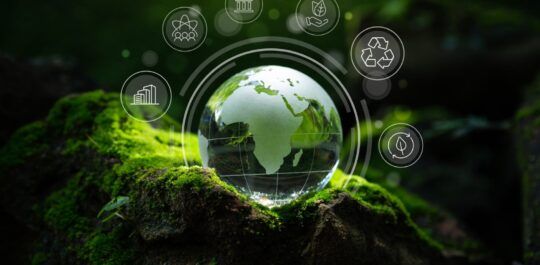In this blog post, we will dive deeper into the findings of the SAP Insight Midmarket Senior Executive Priority Study, exploring how executives in the CPG industry are reshaping their corporate goals and embracing sustainability to address the challenges of our time. From mitigating risks to optimizing supply chains, we’ll uncover the strategies being employed by these forward-thinking leaders as they navigate a rapidly changing global landscape. Let’s dive in and discover how sustainability is becoming imperative for success in the consumer packaged goods industry.
The Consumer Packaged Goods (CPG) Industry in Transformation

New Strategies and Goals in the CPG Industry
Worldwide resource shortages, economic stagnation, the labor market crisis, and climate change: These global problems are having an impact on the operation of all companies. Many executives in the consumer packaged goods (CPG) industry are responding by realigning their businesses and, in many cases, emphasizing sustainability as part of their strategy. The SAP Insight Midmarket Senior Executive Priority Study shows up the priorities set by management in this context. SAP collected data from 10,507 executives from companies in 41 markets with annual revenues below US$1 billion.
The most important corporate goals of the respondents are still the traditional ones: increasing annual revenue, closely followed by enhancing operational efficiency – so far, so not surprising. However, the third most important goal – mitigating business risks – already suggests that the experiences from the most recent crises play a key role: 47 percent of the executives stated that they intended to strengthen supply chain dependability.
Sustainability Is Being Recognized as a Sales Driver
One area that the respondents mentioned as a relatively new strategy to boost revenues and increase efficiency is: sustainability. Sustainable activities have joined the traditional tactics, such as introducing new products and services, expanding to new market segments, and improving brand recognition and reputation. Consequently, this is what the five priorities for future revenue growth now look like:
- Introducing new products or services (38%)
- Expanding to new market segments (35%)
- Increasing sustainability in your products and services (35%)
- Improving brand recognition and reputation (34%)
- Increasing sales to existing customers (33%)
Several different stakeholders driving the sustainability trend: governments, investors, activists, and industry associations. Also, there are now more customers than ever who are giving preference to ecologically produced and fairly traded products and services. Sustainability and fair trade have thus become distinguishing features in highly competitive markets.

Priorities for Improving Efficiency: Cost Control, Optimized Use of Resources, Automation
The reasons for high prices for both manufacturers and consumers are many and varied. Apart from the disruption to energy supplies, further factors such as expansionary monetary and fiscal policies as well as supply bottlenecks come into play. Whatever the reasons, inflation is raising price awareness among consumers. It is therefore becoming more important for businesses to reduce costs and further improve the efficiency of their operational processes. Five measures stood out among the activities planned by the respondents:
- Improving cost control and spend management (45%)
- Making operational processes more sustainable (41%)
- Increasing the amount of automation within processes (39%)
- Ensuring that supply chains are more dependable (38%)
- Increasing emphasis on supplier and partner networks (32%)
While cost savings are necessary from a company’s perspective, they have to be beneficial in the long term as well. If, for instance, a company changes to sustainable production processes, this will generate costs initially, but can result in considerable savings in the long term due to lower resource and energy consumption. Improved sustainability thus does not just have ecological and social benefits, but also ensures more cost-effective processes. Examples include tactics such as limiting wasteful production practices and packaging, optimizing the use of natural resources, locating plants closer to the consumer, and decreasing the distance that goods travel around the world.
In addition, many companies analyze their procurement network to gain and retain suppliers that demonstrate ethical labor practices, regulatory compliance, and the ability to consistently deliver goods that are affordable, safe and high in quality.
New Times, New Risks – New Strategies

Stagflation, geopolitical instability, fragile supply chains: The world is in a state of upheaval – and this forces companies to take appropriate action. Sustainability has become a key element that can boost revenues while simultaneously increasing efficiency. But for this to happen businesses need the right data and technologies. Take the advantage and find out more about current risks and potential solutions for the CPG industry by downloading the whitepaper. We hope and trust that you will find the gained information valuable!





